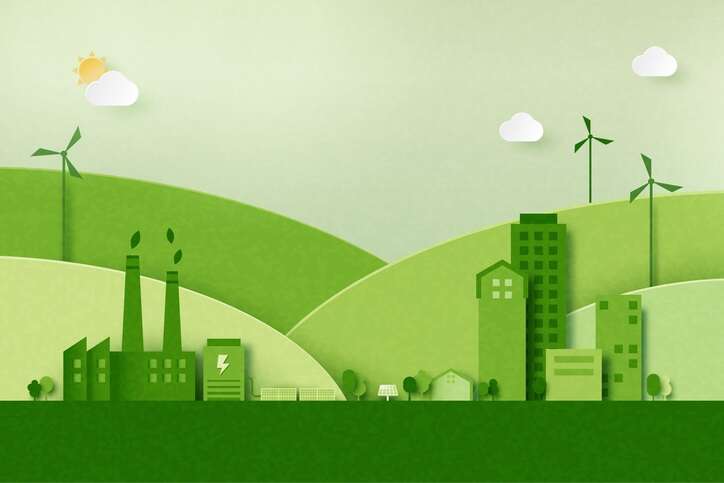

Jeroen Huisman
The current global financial system does not yet produce financial flows that are aligned with a safe and just earth system. Capital mobilised for climate action is definitely increasing, but simultaneously more than $1 trillion per year is still invested in oil and gas[1]. While emerging markets and developing economies (EMDEs) can have most to gain from investment in climate positive growth they attract only a fraction of global investment. Over 80% of investment in clean energy is in advanced economies, including China1. Two critical challenges need to be overcome in the short-term to mobilise more capital: (1) increasing the pipeline of investable projects and (2) more & better de-risking mechanisms to address high cost of capital. New global green guarantee platforms targeting higher mobilisation of private capital, lower transaction cost and a structural link to project preparation can be pivotal in mobilising capital for climate action in EMDEs.
The urgency to reduce global greenhouse gas emissions and adapt to a changing climate is only increasing. Recent record temperatures and extreme weather events are showing us what the real effects of climate change look like. In the first week of July, the record for the world’s highest temperature ever measured was broken, not once but three times in one week[2]. Scientists are clear, this is not coincidental and we can expect more of this while global temperatures continue to rise[3]. Emerging Markets and Developing Economies (EMDEs) have both most to gain and most to lose. Climate action provides a big opportunity for building more resilient and equitable economies through investment in for example renewable energy, regenerative agriculture and green mobility. If done right, this should be the growth story of the 21st century. Simultaneously, global warming will have outsized impact on EMDEs. This includes more frequent and devastating fires, flooding, extreme heat and storms, disproportionately impacting the poorest and most marginalised communities
Increasing private investment in climate positive growth is essential for a safe and just earth system. About $2.4 trillion per year is needed for climate action in Emerging Markets and Developing economies (excluding China)[4]. The bad news is that we are currently only at 20% of this and about 60% of EMDEs are either in or close to debt distress, placing severe limits on public investment in the transition[5]. The good news is that climate action can be a major driver of growth, unlocking investment and new economic activity. New green economic sectors provide opportunities for economic development that create new jobs. Moreover, much of the capital required for this can come from the private sector into opportunities that are – or soon will be – commercially attractive as technology tipping points make these investments viable. Overall more than half can and needs to come from private capital.
To mobilise more private capital we need to address the mismatch between available capital and available projects. The current financial system is not mobilising the amounts of (private) capital that are needed[6]. Economist would call climate change an ‘externality’, which means its effects are not integrated in prices. The result of this is that emissions are not naturally part of making financial decisions and the system does not result in risk-return models that put climate action at the heart of capital allocation. Ultimately changes will be needed to align our economic and financial system with a safe and just earth system. Given the urgency, in the meantime, we need to overcome the mismatch between available projects and available capital. First, those with capital available often find that there are insufficient investable projects available to invest in. Which means projects that they know about and match the risk-return requirements of their capital. Second, those developing projects often find high cost of capital driven by project and country specific risks a critical challenge to find sufficient funding for their projects. This mismatch driven by lack of funding for project preparation, a limited understanding of the investment opportunities, and high real and perceived risk will need to be overcome to mobilise more private capital.
New global green guarantee mechanisms that integrate project preparation can play a crucial role. Guarantees are a way to reduce project and country specific risks to investors. Investors pay a guarantee fee to the guarantee provider in return for the provision of a guarantee. This guarantee is typically specific to certain types of risk (like credit risk, currency risk, off-take risk) and/or a certain share of the underlying financial product (less than 100%). Guarantees help to reduce the specific risk for investors, but over time also help to build track record of investment, increasing data availability, knowledge and expertise. As examples such as GuarantCo guarantees show, this supports the build-up of trust and domestic markets, reducing the need for guarantees over time. However, guarantees are only effective if there is a sufficient pipeline of investable projects that comes with it. An integrated approach where guarantee mechanisms are combined with a structural link to project preparation funding facilities and early-stage financing are therefore crucial. Too often, climate finance mechanisms are not fit-for-purpose, resulting in the capital not being fully deployed. New guarantee mechanisms should be market-driven and allow providers to offer and structure their products to best meet the needs of private investors. They should also include incentives for the guarantee providers to be actively involved in finding and developing deals.
It is now crucial to shift from design to implementation and build on the momentum for private capital mobilisation and climate positive growth at the Paris Summit for a new Global Financing Pact in June and the foundation of the new Private Sector Investment Lab by the World Bank[7]. If designed right, guarantee mechanisms can be a powerful way to address existing critical challenges. For example, $1 billion of public capital for project preparation, fee subsidies and administrative cost could contribute to mobilising $30 billion of private capital6. This provides a path forward for effective and catalytic use of public capital to accelerate climate action in EMDEs.
[1] IEA (May 2023), World Energy Investment 2023, https://www.iea.org/reports/world-energy-investment-2023
[2] BBC (July 2023), World records hottest day for third time in a week, https://www.bbc.com/news/science-environment-66120297
[3] IPCC (March 2023), AR6 Synthesis Report: Climate Change 2023, https://www.ipcc.ch/report/sixth-assessment-report-cycle/
[4] Songwe, Stern, Bhattacharya (2022), Finance for Climate Action, Songwe, Stern, Bhattacharya (November 2022), Finance for Climate Action, https://www.lse.ac.uk/granthaminstitute/wp-content/uploads/2022/11/IHLEG-Finance-for-Climate-Action.pdf
[5] IMF Global Debt Database, https://www.imf.org/external/pubs/ft/ar/2022/in-focus/debt-dynamics/
[6] Blended Finance Taskforce (June 2023), Better Guarantees, Better Finance
[7] World Bank Group (June 2023), press release, https://www.worldbank.org/en/news/press-release/2023/06/22/world-bank-group-intensifies-focus-on-private-sector-launches-effort-to-scale-investment-in-emerging-markets


